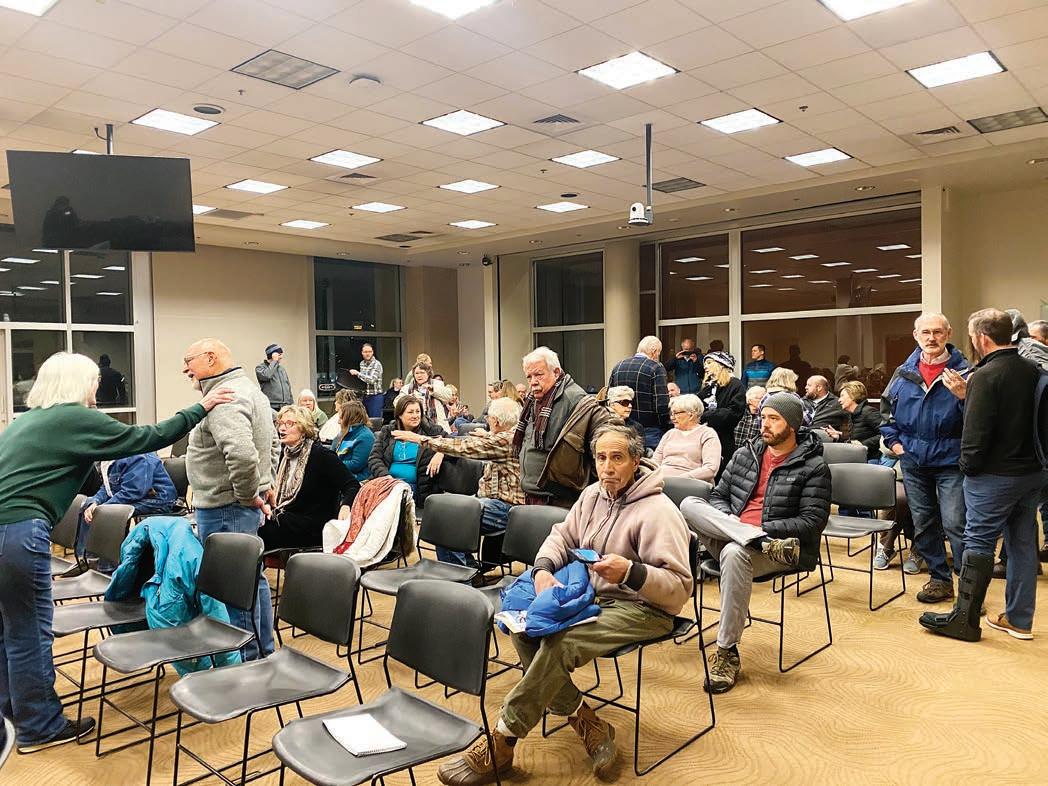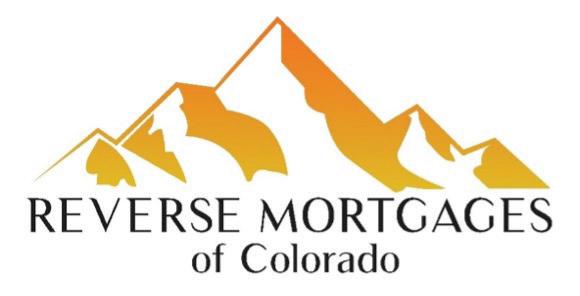
7 minute read
Englewood considers increasing housing density
Proponents of plan point to a ordability
BY TAYLER SHAW TSHAW@COLORADOCOMMUNITYMEDIA.COM
As Englewood tackles housing a ordability issues, tension has risen between some residents and city council members regarding a potential rezoning the council is considering that would increase housing density in traditionally single-family residential areas.

Rezoning refers to the process of changing what types of development and property uses are permitted in certain sections, or zone districts, of the city. Englewood’s zoning rules are listed in the city’s Uni ed Development Code.
Currently underway is a project called “CodeNext,” which is an effort to update Englewood’s development code.
One of the ideas the council is considering as part of CodeNext is allowing for two-to-four-unit buildings — also referred to as duplexes, triplexes and fourplexes — to be built on some larger residential lots that exist within the city’s R-1 zone districts, as long as at least one of the units is more a ordable.
R-1 zone districts represent areas that have residential one-dwelling units, also known as single-family homes. According to the city’s code of ordinances, there are three types of R-1 zone districts: e Englewood Campus, made up of the Englewood High School, Englewood Leadership Academy and Englewood Middle School, was placed on a lockdown.
• R-1-A, which means the properties typically have a larger lot size.
• R-1-B, which typically represents a medium lot size.






O cers responded to Englewood High School at 9:19 a.m. on a report of shots red, the police department said via Twitter.
As of 10:54 a.m., o cials cleared the school and determined there were no threats or injuries, the police department said.
“Swatting causes extreme disruption and can be dangerous. It is also deeply unsettling for anyone affected,” Rubin said in her letter. “ is particular incident has impacted several schools and districts across Colorado today.” e possibility of allowing twoto-four-unit buildings to be built on certain lots in R-1-A, R-1-B and/or R-1-C zone districts — and what the requirements should be for those instances — was something the city council discussed during a Jan. 23 meeting. e median household income in Englewood grew from $59,774 in 2019 to $66,399 in 2020, representing an 11.1% increase, according to Data USA. In this case, 80% of the area median income would be roughly $53,119. e niche that this ts in is in the missing middle housing, so the idea behind this is that we need more housing of all types, across the entire board,” he said, prompting a loud echo of “No’s” from the crowd.
• R-1-C, which typically represents a smaller lot size.
Some residents attended the Feb. 6 and Feb. 21 city council meetings to voice their issues with the proposal, raising concerns such as whether increased density will worsen parking and the city’s services, how the buildings may impact the property value of nearby homes, and whether the changes would actually result in more a ordable housing options.
“ e zoning change proponents … cite the need for a ordable housing, and I think we can all agree on that need. What we don’t agree on is how to get there,” said Englewood resident Stephanie Brooks during the Feb. 21 meeting.
Behind her was a large crowd of people, many of whom held signs in opposition to the potential rezoning.
“I don’t think that increasing density there is going to help with a ordable housing,” said Carson Green, a resident who said he lives in an R-1 zone district.
Responding to the public comments, Councilmember Joe Anderson said the council is still in the process of guring out details of CodeNext and public feedback is important.
“We’re still in the development stage of this idea. So, we have a sense that what we’re talking about — we have a general consensus on council. ere’s at least four of us that support something along these lines with corner lots and large lots allowing for increased development up to fourplexes for — as long as one unit is required to be a ordable at the 80% AMI (area median income) level,” Anderson said.
“I understand a lot of you are interested in a ordable housing. You want a ordable housing. I do hear some of you maybe aren’t interested in development at all — to me that’s not a, you know, that’s (a) non-starter for the conversation. But for those of you who want to help address the a ordable housing crisis that we have, and really it is a crisis, we do want to hear your ideas on that,” Anderson said.
“ is is one piece of that puzzle.
“You are not hearing us,” someone shouted from the crowd, as Mayor Pro Tem Steven Ward called for order in the room.
“ e reality is change is already here in Englewood. Household sizes are much smaller than they used to be, demographics of Engle- wood have changed dramatically in the last 10 years, prices have gone up signi cantly … so we already have change. And this is a modest change,” Anderson said, as people from the crowd voiced disagreement.
“We’re allowing for increased multifamily housing in certain areas of R-1 and I think that’s an important piece, this component. I recognize you disagree and look forward to the continued conversation,” he said.
Councilmember Rita Russell, who has previously raised concerns about the rezoning idea, thanked those who came to the meeting.
“And know this — I am hearing you. ank you,” she said to the applause of the crowd.

Two days later, the night of Feb. 23, Anderson and Councilmember Chelsea Nunnenkamp held an “Affordable Housing Town Hall” at the Englewood Civic Center, attracting a large group of attendees.
Anderson explained the purpose of the two-hour event was to share more information about CodeNext, its timeline and why various proposals are under consideration.
“We love our neighborhood. We love our city. But I also have, over the years, seen what’s happened to our housing market. And I’m concerned,” he said. “I’m concerned about the future and concerned about other members of our community, and people who are on the edge and in poverty in our community.
“And to me this is — it’s (a) crisis level situation, and we can’t bury our heads in the sand. We have to actually do something about it.”
Englewood’s housing report
To help explain the data that is informing the city council’s CodeNext considerations, Nunnenkamp shared some of the ndings from Englewood’s housing needs assessment.
e city got a grant through the state to do the assessment, which was done by a consultant called Root Policy Research, she said. Root Policy Research is a Denver-based community planning and housing research rm that also recently did the City of Centennial’s housing needs assessment.
Last November, the rm presented to Englewood City Council its ndings of what the city’s housing needs are, Nunnenkamp said.
One of the ndings she highlighted was that the home value in Englewood has tripled over the last 22 years, increasing from $182,504 in 2000 to $597,853 in 2022 — a 328% increase, per the report.
“ ey found that metro-wide, while home prices are increasing, the availability of houses is decreasing,” Nunnenkamp said. “Houses are getting more expensive, and there’s fewer of them, and there’s more people who need them. at’s not a great combination.”
In 2020, approximately half of all Englewood renters were cost burdened, which is when a household spends more than 30% of its income on housing costs, according to the report. Roughly 23% of renters experience severe cost burden, meaning they pay more than 50% of their income on housing, and are considered at risk for homelessness.
At the end of the report, there are some suggestions of actions Englewood can take to address its housing challenges, Nunnenkamp said.
“One was that we need more diverse housing options to accommodate evolving needs of residents, and a wider array of market preferences and special needs. So there’s not one answer — we need a diverse set of options, a wider array of types of housing to meet the needs that we have.”
According to the report, there is a shortage of 1,627 units priced for households earning less than $25,000 annually, which represents households earning roughly 30% of the area median income.
“We also need more starter homes priced near or below $300,000,” Nunnenkamp said, noting another need is transitional housing for people experiencing homelessness.
“ is is what we’ve been working on,” Nunnenkamp said. “We’re looking at all the di erent things that we need to be doing … so that this a ordable housing can occur in our city.”
Nunnenkamp said some people have asked if these issues can be taken care of by voucher-based housing — a federal government program that subsidizes rent for some low-income families, people with disabilities and older adults so that they can a ord housing. She said she spoke with someone who sits on Englewood’s housing authority board and found out there is a voucher waiting list of more than 800 people in Englewood.
“ ere’s a lot of ideas. It’s going to take all of them,” she said.
CodeNext timeline
Anderson said the CodeNext process began in July of 2020, part of which included doing public engagement meetings and, later, setting up a steering committee for the development code redrafting process.
“ e steering committee was made up of members of the planning and zoning commission as well as a number of other residents in the city. And they’ve been working through the code along with the consultant that we hired to do it — and then Root Policy Research, they work with them as well,” he said. e council originally got quarterly updates on the CodeNext project’s progress, Anderson said.
“And then most recently, starting in the fall, we started doing study sessions on di erent topics, working through all the di erent chapters,” Anderson said, explaining the council members give their ideas and suggestions during those meetings. “Now, we’re in the nal stages of those study sessions — we may just have a few left.”
Once the draft of the code has been nalized, the next big step will be a public hearing held before the planning and zoning commission, as the commission considers if it will recommend that city council approve the draft or not.
“At that hearing, they will take public feedback on the draft code that they presented. And then following that public hearing, they will have the chance to amend it, change it in whatever form that they feel based on the public feedback that they received before it comes to city council,” he said. “Once it comes to city council, that process starts over again. So we’ll have another public hearing.”

























